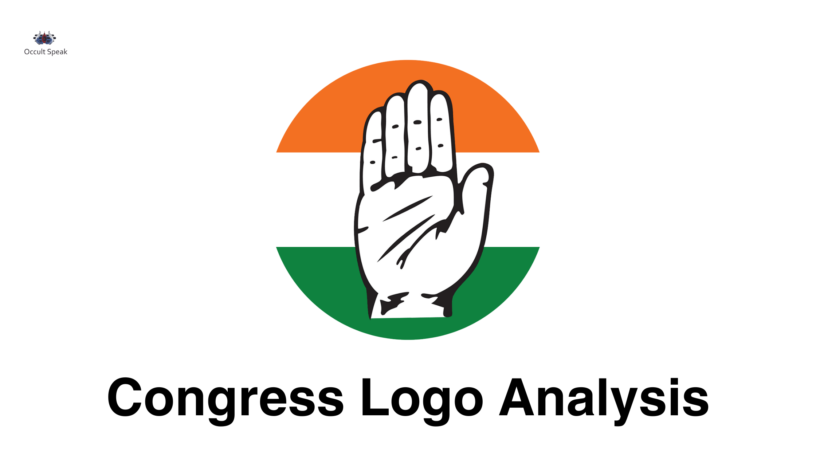Congress Logo History : The Indian National Congress (INC) also known as the Congress Party or simply the Congress is a political organization located in India with roots deep across the majority of regions of India.
It was founded on the 28th of December, 1885 it was the very first modern nationalism movement to arise within the British Empire in Asia and Africa.
From the end of the 19th century, and more specifically in the years after 1920, under the direction of Mahatma Gandhi the Congress became the primary head for India’s Indian independence movement.
The Congress had led India to independence from the United Kingdom which had significantly influenced other nationalist movements that were anti-colonial throughout and around the British Empire.
Let’s first move into the history of this political party ( to understand the mindset and geopolitical situation which create different logos in congress party ) before moving to analysis of different logo symbols of Congress and finally, we will analyze the current Indian National Congress logo also known as Congress Logo.

Indian National Congress Logo Analysis – 1906-07
The Indian National Congress (INC) Congress logo is a tricolour flag with a spinning wheel (Charkha) in the centre. The flag consists of three horizontal stripes of equal width: saffron (top), white (middle), and green (bottom).
The spinning wheel is a symbol of self-reliance and economic empowerment. It was adopted as the party’s logo in 1931, designed by Pingali Venkayya.
The tricolour flag was first hoisted on Aug 7, 1906, at the Parsee Bagan Square in Calcutta (now Kolkata). Very few know that it was designed by Sister Nivedita, a disciple of Swami Vivekananda.
The flag was originally meant to represent the unity of Hindus and Muslims, but it was later adopted by the Indian National Congress as its flag.

The spinning wheel was added to the flag in 1931, at the suggestion of Mahatma Gandhi. He believed that the spinning wheel was a symbol of self-reliance and economic empowerment.
The spinning wheel is also a reminder of the important role that the Khadi movement played in the Indian independence movement.
The INC logo is a powerful symbol of India’s freedom struggle and its commitment to self-reliance and economic empowerment. It is a reminder of the sacrifices that were made by our freedom fighters and the importance of unity and diversity in our country.

Indian National Congress ( R ) Logo Analysis ( 1969 )
The Indian National Congress (Requisitionists) was headed and established by Indira Gandhi in 1969. The then Indian National Congress was divided into Indian National Congress (O) and Indian National Congress (R).
“R” signifies ‘Requisition’, the first Congress party later changed to the Indian National Congress (Organisation)/ Congress (O) and headed by Kamaraj.
It was officially known as the organization Congress (O) or Syndicate and retained bullocks with the chain as the party’s logo. Mrs Gandhi’s break-away group presented a new symbol of a cow and a baby calf suckling by the Election Commission as the party logo for the election.
Late Prime Minister Smt. Indira Gandhi had a cow with a calf as a symbol of Congress (I). This baby calf-sucking mother shows unity and great bonding between the masses.
Reason for splitting and creation of Indian National Congress Logo
The split happened in 1969 when a unison opposition under the umbrella of Samyukt Vidhayak Dal gained control of certain states of the Hindi belt.
Indira Gandhi, the Prime Vice-President and daughter of Jawaharlal Nehru, was later challenged in the eyes of the party’s leadership. Gandhi created the new party to show her support to the masses.
In the general elections of 1971, Congress (R) secured the majority of votes, winning 352 seats out of 518 in the Lok Sabha. In the State elections for five assemblies, the Congress (R) did very well.
Later on, in the 1970s, Congress (R) was renamed Congress (R) and changed into Congress (I) and the letter “I” meant Indira. With time, Congress (I) became the Indian National Congress, as Congress (O) merged with the Janata Party.
Other parties that split from the Congress party. These included the Congress for Democracy and The Indian National Congress (Urs).

Indian National Congress Logo Creator
The Indian National Congress (R) logo ( Congress Logo ) , created by Indira Gandhi in 1978, is a stylized image of a hand. The logo of Hand represents the common man whereas the tri-colour symbolizes enlightenment, progress, freedom, and patriotic feelings. This logo has been popular as the “hand symbol” or the “Congress hand.”
It is believed, that the hand logo was designed by an artist Nandalal Bose, who also designed the Indian flag. But looking at the history, Nandalal Bose died in 1966 at Shanti Niketan.
The hand logo seems to come into the picture in 1978. Hence, I am not convinced that this logo was created by Mr Bose. Bose was a renowned artist and a close associate of Mahatma Gandhi. He was known for his simple and elegant designs, often incorporated into traditional Indian motifs.
How was the Current ( 1977 to till date ) Symbol of Congress Logo created?
Do the younger members of the Congress party know how they got the symbol of the Hand?
This is the answer to that question: It is believed that the Grand Old Party got it from a small, quaint temple called Hemambika Temple in Palakkad district of Kerala State.
The temple located in The town of Palakkad is also known as Emoor Bhagavathy Temple which is often referred to for its Kaipathi (Hand) temple.
The fact is known only to a handful of senior members of the Congress who reside in Kerala.
Hand is the symbol Hand was chosen by then Prime Minister Indira Gandhi after she had fallen removed from power in the late seventies after a visit to this temple.
The deity here is represented by two hands thought to be the hand of goddess Parvathy in need of help, amidst drowning in the sea. Parvathy plunged into the water in fear of attacks from demons. Lord Shiva appeared to rescue her after seeing the hands. recounting the epic stories about the ancient temple.
Indira’s Congress symbol of the party was a Cow with a Calf. The Congress was unable to retain the symbol following the 1977 elections because of a disagreement.
Leaders of the rebels, such as the former Karnataka Chief Minister Devaraj Urs also put a claim to the symbol.
On a trip to Kerala, the Kerala Chief Minister, Shri K. Karunakaran escorted Indira ji to the temple. The uniqueness of God sparked her imaginative mind. The visit to this small temple was not pre-planned, and Karunakaran led her to the temple after Indira arrived at Palakkad town to speak at an assembly.
Senior leaders from Kerala claim that the story of the goddess – a help-seeking Goddess Parvathy’s hands as she drank water was awe-inspiring for Indira when she was amid all sorts of challenges from the Janata Party government.

Current Congress Logo Analysis
Analyzing the Current Congress Logo involves dissecting its design elements, symbolism, and historical context.
- Hand: The hand is a powerful symbol in Indian culture, often representing strength, unity, and empowerment. In the Congress Party logo, the hand with the palm facing upwards could symbolize openness, reception, and the party’s readiness to listen to the people.
- Three Lines in Hand: The Congress Party logo features a hand with an upturned palm, symbolizing openness and receptiveness to the people’s voices.
The current logo of the Congress Party comprises a tricolor encircled by a ring, with a prominent hand symbol featuring three distinct lines: the lifeline, headline, and heart line, as observed in palmistry.
The lines are traditionally associated with an individual’s life when clear, uninterrupted, and unbroken symbolize vitality, intellectual clarity, and emotional balance.
Their inclusion in the party’s emblem suggests an intentional invocation of vigor and auspiciousness, aligning with the party’s Ethos of vitality, growth, and prosperity.
- Circle: The circular design surrounding the Hand and Lotus flower could symbolize unity, continuity, and inclusivity. It suggests a sense of wholeness and completeness, emphasizing the party’s commitment to encompassing diverse perspectives and uniting people under a vision.
- Color Scheme: The colors used in the logo also carry significance. The predominant colors are typically green, white, and saffron.
- Green symbolizes growth, harmony, and fertility, while white signifies purity, peace, and truth. Saffron, often associated with Hinduism, represents courage, sacrifice, and the quest for knowledge.
- Historical Context: The Congress Party has a rich history dating back to the Indian independence movement. Its logo likely draws on this legacy, incorporating symbols and imagery that resonate with the party’s founding principles of democracy, secularism, and social justice.
In essence, the Congress Logo appears to be crafted carefully to convey a message of unity, inclusivity, and progress.
It draws upon potent symbols from Indian culture and history to evoke a sense of national pride and aspiration for a better future.
However, interpretations of symbols can vary, and the logo’s meaning may evolve in response to changing political contexts and societal values.
Hope you appreciate the Congress logo analysis, focusing on the symbolic incorporation of palmistry lines to convey a message of vitality and prosperity, in line with the party’s vision for a vibrant and inclusive India.
Love & Light,
Logo Analyst




Leave a Reply